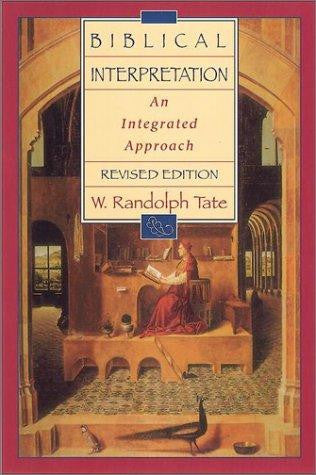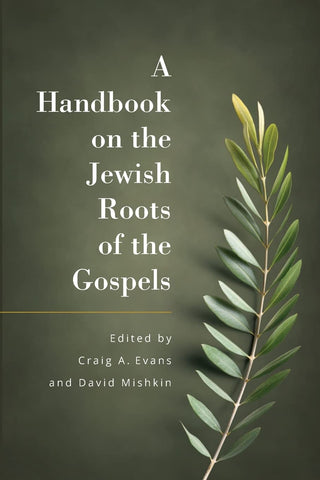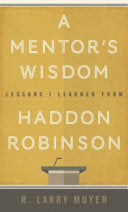
Biblical interpretation
By: W. Randolph Tate| Product Details | |
|---|---|
| Publisher | Hendrickson |
| Year | 1997 |
| ISBN | 9781565632523 |
In Biblical Interpretation W. Randolph Tate invites the reader to explore three predominant types of interpretation: author-centered, text-centered, and reader-centered. Tate has not, however, resigned himself merely to describe sterile methodologies or abstract theories. Concerned that readers have a practical grasp of the interpretative process, he offers description, prescription, example, and application. Review and Study sections included in each chapter provide a list of Key Terms discussed and defined in the text, Study Questions, and suggested Further Reading.
This comprehensive exploration of the interpretative process has been revised and updated and includes a new chapter that models how integrating reader-centered, text-centered, and author-centered interpretation fosters a better understanding of the Bible.
- Randolph Tate is Professor of Humanities at Evangel University, Springfield, Missouri. He is author of Reading Mark from the Outside: Eco and Iser Leave their Marks and Biblical Interpretation: An Integrated Approach.
Table of Contents:
Preface to the Revised Edition xv
Preface xvii
Introduction: A Journey into Three Worlds xix
U n i t I : T h e Wo r l d B e h i n d t h e T e x t
CHAPTER ONE:
Why Study Backgrounds?
An Apology for Historical Research 3
Review and Study 11
CHAPTER TWO:
The Importance of Language:
The Grammatical Background 13
Phonology 14
Morphology 16
Lexicology 17
Syntax 21
Review and Study 27
CHAPTER THREE:
Reading and the World Behind the Text:
The Historical and Ideological Backgrounds 29
Historical and Cultural Background 30
Some Examples of Historical Background Studies 31
The Ideological Context 35
The Ideological World of the Old Testament 37
Examples of Comparative Study 39
The Ideological World of the New Testament 42
Review and Study 62
Uni t I I : The Wor l d Wi thi n t h e T e x t
CHAPTER FOUR:
The Bible as Literature and Literary Forms 67
Common Literary Sub-Genres 71
Archetypes 77
Review and Study 78
CHAPTER FIVE:
How the Hebrew Bible Communicates as Literature 80
Hebrew Narrative 80
Hebrew Poetry 106
Hebrew Prophecy 110
Review and Study 114
CHAPTER SIX:
How the New Testament Communicates as Literature 116
The Gospels and Acts 116
Sub-Genres in the Gospels 125
Epistolary Literature 132
Sub-Genres in the New Testament Epistolary Literature 141
Apocalyptic Literature 146
Review and Study 152
Uni t I I I : The Wor ld in F ront o f t h e T e x t
CHAPTER SEVEN:
What Happens When We Read? 157
The Dialectics of Discourse 160
Review and Study 184
CHAPTER EIGHT:
What the Reader Brings to the Text:
The Role of Reader Presuppositions 187
The Role of Preunderstanding 187
Reader Presuppositions 188
Theological Presuppositions 189
Review and Study 193
CHAPTER NINE:
How Methods Affect Interpretation 195
Author-Centered Interpretation 196
viii BIBLICAL INTERPRETATION
Author-Centered Theories 198
Text-Centered Interpretation 208
Text-Centered Theories 209
Reader-Centered Interpretation 214
Review and Study 231
CHAPTER TEN:
Mark’s Gospel and the Merging of Three Worlds 234
Mark’s Use of Literary Allusion 235
Mark’s Use of Intercalation 240
Jesus’ Relationship to His Contemporary World View
According to Mark 242
Conclusion: The Ending of Mark and the Predicament
of the Reader 250
Review and Study 251
CHAPTER ELEVEN:
The Never-Ending Story 254
Select Bibliography 259
Index of Modern Authors 269
Index of Scripture References 271
Table of Contents ix




